
![]()
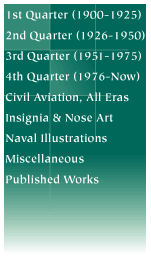
PAINTED HORSES:
EARLY MUSTANGS in RCAF and USAAF USE
By Bob Pearson
Undoubtedly one of the most famous aircraft of the Second World War would be the North American P-51 Mustang. Designed and built in just over 120 days, the Mustang was originally developed for the British and it was them that gave the new aircraft its name - the Americans called it Apache.
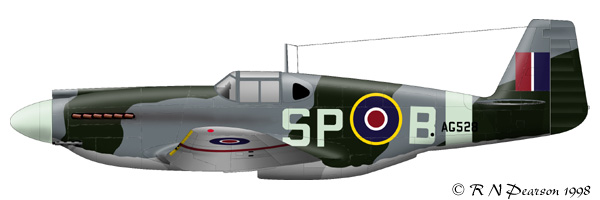
North American Mustang Mk.I AG528
No.400 Sqn RCAF
Early RAF/RCAF Mustangs were in the prevalent scheme of Ocean Gray/Dark green/Medium Sea Gray. With Sky band and spinner; Yellow leading edges.
The Hawker Typhoon wasn't the only Allied aircraft that suffered from recognition problems. At many angles the new Mustangs were mistaken for the Bf109. Again the fix was to use yellow stripes to identify friend from foe. In the Mustang's case this was in the form of a 12 inch band around the wing. Note that SP-B had to break this rule and has a red band !!! Also note the painted over rear canopy housing an oblique camera for aerial photography.
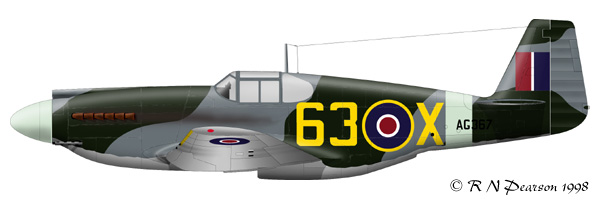
North American Mustang Mk.I AG367
No.400 Sqn RCAF
Mustang 63-X is seen when No.400 Sqn had been withdrawn from action and was serving as an Operational Training Unit. The Squadron code had also changed from the earlier 'SP' to '63'
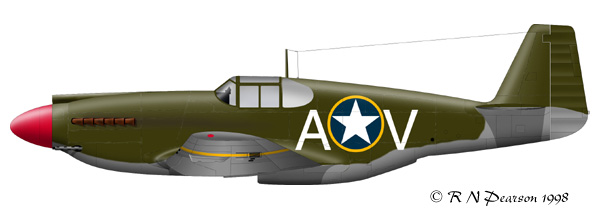
North American A-36A Invader
514th FS, 27FBG, 12th AF USAAF
Tunisa, 1943
The A-36 was a dive-bombing variant of the basic Mk.I developed for the USAAF. Yet one more name for these aircraft was Invader. Markings of note here are the red spinner carried by Allied aircraft in the Mediterranean theatre and the de riguer yellow stripe on the wing.
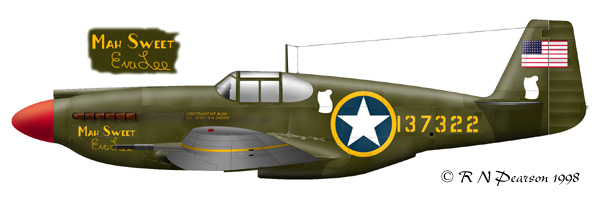
North American P-51A Mustang 41-37322
Lt NF Bush
164th Obs. Sqn, 68 Obs. Grp, 12th AF USAAF
Tunisa, June 1943
Exhibiting some wear is Eva Lee - another Mediterranean based Mustang. Items of note are the yellow outline to the fuselage star, US flag on the fin/rudder. Also note the anit-gas patches on fin and fuselage

North American P-51A Mustang
Major R T Smith
1st Air Commando Group
CBI theatre
Finally the USAAF came around and called their North American fighter the Mustang. Seen here in the 1st ACG's markings of five diagonal white stripes. A/c of this unit carried varying numbers and widths of stripes on the fin/rudder. The tips of the wings and tail were also frequently seen in natural metal, as was the spinner. Note the D/F loop on the rear fuselage. The National marking has recently had it's red surround repainted in dark blue. Although appearing to be overall Olive Drab, there is in fact a thin Neutral Gray streak on the bottom of the fuselage. Normally serials were large stencilled yellow numbers on the fuselage side, but I have been unable to determine this or the previous a/c's numbers.
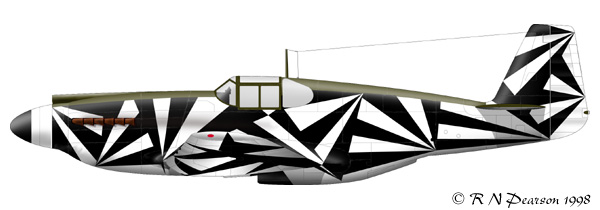
North American P-51
This Mustang was painted in an attempt to see the effects on visual sightings. The bottom was also painted in black/white angular markings, but the pattern shown on the bottom of the wings here is totally speculative. All upper surfaces were in normal O.D..